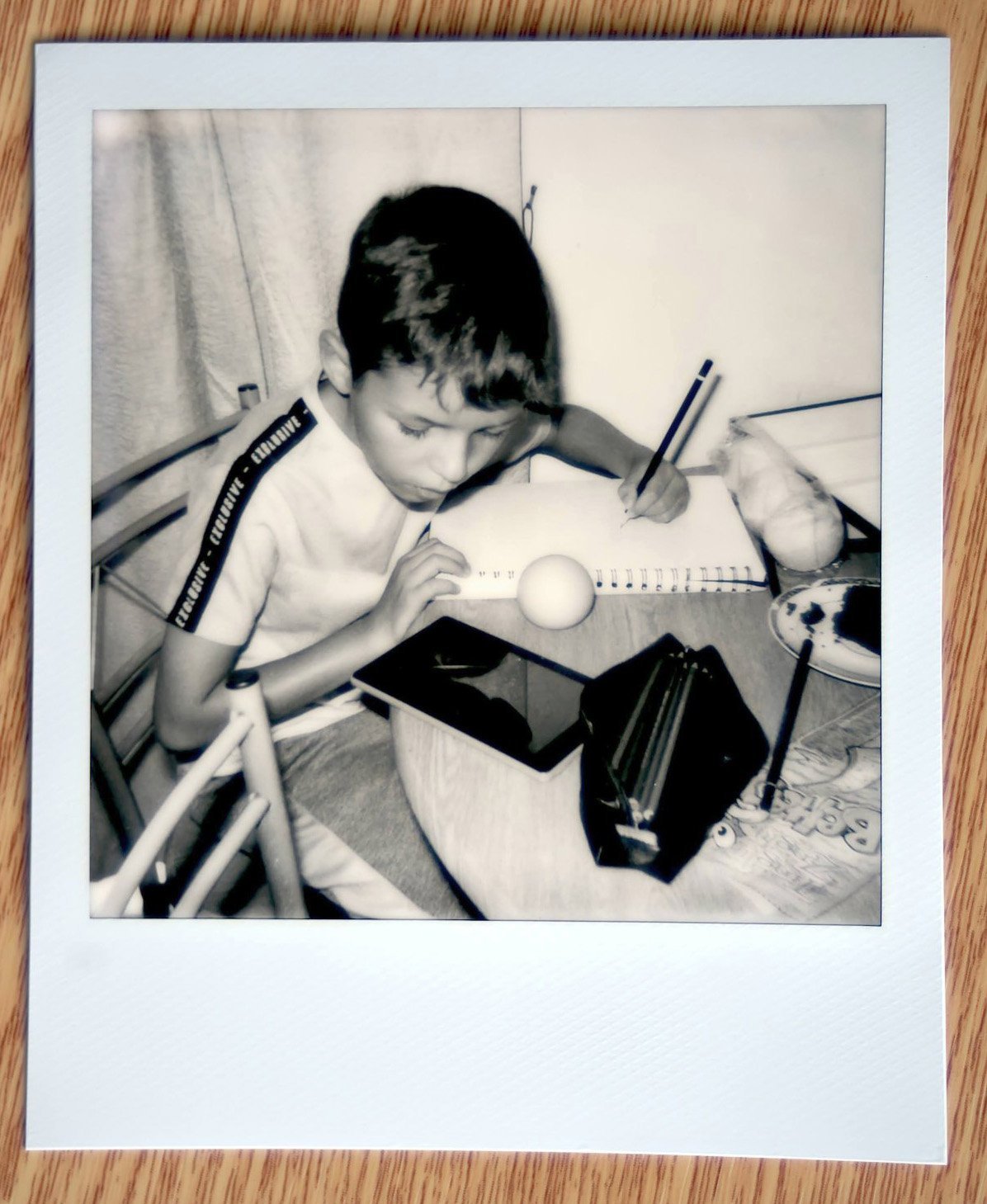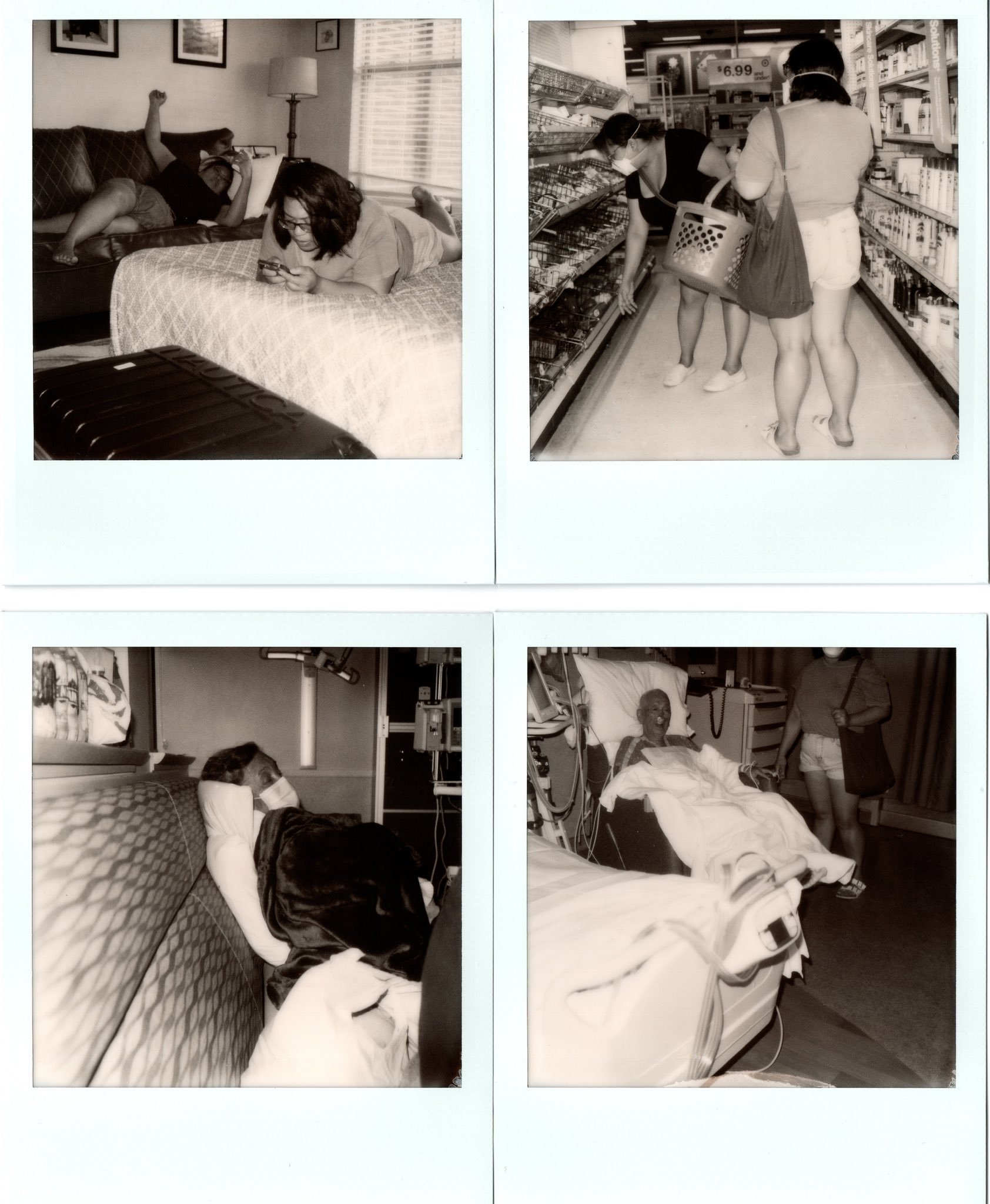Community Spotlight: Shitty Camera Challenge: Instant Regret
Chad Hill, co-winner of “Instant Regret”
The conceit behind the Shitty Camera Challenge is simple: you don't need fancy, expensive gear to make a good photograph. It is entirely possible to make interesting, beautiful, thought-provoking images on a camera that is, well, shitty. The Shitty Camera Challenge (which I'll refer to as SCC for brevity's sake) is an embrace of the lo-fi, low-res, low-tech aspect of the photographic medium in it's various forms.
The SCC was born on Twitter in 2018, the brain child of Adam James, a self-taught artist who first came up with the idea after he and his wife found some cameras at Goodwill they thought would be fun to play around with. “The SCC was originally a low effort trolling of photography competitions, but people really responded and it grew from there. The reaction to the SCC has been overwhelmingly positive, which is still a genuine surprise to me.” There have been a number of challenges over the past four years with themes like the “#GetMono Monochrome Thunderdome” and “Crappy Commie Camera Party”, where participants are given a set time period in which to shoot and share their interpretation of the challenge. At the end someone is declared a winner and bestowed the reward of eternal bragging rights (shout out to this year's winners Maureen Bond and Chad Hill!) and Adam will declare that the SCC is dead, though so far it has always re-risen like a persistent zombie.
For August and September of 2022 the theme was “Instant Regret,” the idea being that all instant photography, by virtue of the film, the camera, or both, is, at it's core, kind of shitty. The cameras used ranged from fresh-off-the-shelf Instax, vintage Polaroid, medium formats with instants backs, and any random old camera the right size to finagle a piece of instant film against the film plane. Portugal based photographer Keith Devereux even managed to resuscitate an obsolete Kodak EK2 from the late '70s (also known as The Handle because you actually have to hand crank the film through the rollers) by creating a plastic mount the size and shape of the original film to accommodate a sheet of Fuji Instax Square film. Elsewhere, Ben Cushwa made instant images by exposing his film to lasers and flames. This is the kind of experimentation and ingenuity that the SCC breeds amongst its participants.
For myself and the other participants I have queried, the most beautiful thing about the SCC is the genuine sense of camaraderie that develops (ha) between photographers from all around the world. When I asked British photographer Dave Whenham, who has been photographing for nearly 50 years, about his experiences in participating in this challenge he shared this with me: “What did I enjoy about it? The camaraderie, the encouragement and support of other participants, the sharing of ideas, the willingness of others to share their secrets and their failures too. It was truly a community activity. I came away from it having exercised my creativity in a way I’d never really embraced it before.”
There is a celebration over triumphs and a commiseration over failures, which instant photographers know are rampant. There is also a delightful element of fun and humor (and, of course, memes) to the whole community, as well. That dried out, expired film that won't spread, the new pack of film that just can't seem to take an image, the exasperated shouts of “Why isn't this working?” we've all been there and can share a laugh about the frustrating ridiculousness of it all. No one is ever truly on their own in the SCC, there is always someone to offer advice or inspiration, which in this case gave rise to subgroups who titled themselves the Emulsion Lift Gang, the Trichome Party, and the Thermal Print Squad.
The Thermal Print Squad seems to be largely the fault of Karin Lizana, a Chilean photographer now living in San Francisco, who, in the run-up to this year's challenge, posted a dinosaur-styled kid's camera which caught many people's attention and likely caused thermal print camera sales to skyrocket. Thermal print cameras are basically low-res digital cameras with a built in receipt printer; if you imagine hooking up your cell phone from 2001 to a cash register, that's about the level of tech we're talking about. The work that came out as more and more people joined the Thermal Print Squad was great proof that amazing photography can be made with the shittiest equipment and only cost pennies a print. Karin's experiments with her thermal camera led to a beautiful handmade accordion scrapbook of photographs of her favorite places in San Francisco, utilizing the low-res, high contrast nature of the medium to emphasize the graphic formality of the subjects.
This was the first time I actually participated in a SCC, and, for me, a situation like this is a great excuse to experience making photographs for the pure joy of engaging with the photographic process. I think these sorts of periods of freedom and experimentation are wonderful opportunities for us to expand our visual minds and may lead us into new aspects of our artistic journey. As Karin says, “Regarding my work, the Shitty Camera Challenge helps me to train my creative muscle. Since I have no expectations whatsoever, it always helps me to find new projects to work on in the long run. Even when it doesn't, it helps me to leave my current projects for a while and then come back with a new set of eyes.”
Peter Robinson, working out of Australia, echoed my personal thoughts about the struggle of reconnecting with your artistic side during periods of difficulty, that sometimes you need an excuse, a motivation to break out of your routine to reestablish that balance. “(These challenges) have helped me prioritise making images. Life has been terribly busy the last several years and the challenges have helped motivate me to get out and do something rather than keep working. It’s helped me regain focus and prioritise something I enjoy and helped me survive a very busy and stressful time in life.”
Even for experienced photographers it's a great excuse to pick up a new camera or try a new process. For Scottish photographer Morag Perkins, who has participated in a number of these challenges, this iteration inspired her to explore instant photography for the first time. “I’ve taken part in several Shitty Camera Challenges and it’s been an unexpectedly important part of my development as a photographer! The Shitty Camera Challenge has taught me how to work with constraints and imperfections to turn them into strengths, something that my perfectionist streak really needed to learn. Things I have learned from taking part in these challenges absolutely feed into the rest of my work and it’s definitely informed a lot of my thinking about what photography is, what it isn’t, and what it could be!”
And, in further proof of my hypothesis that it is the magic of interacting with the physical experience of making a photograph that gets people hooked, David Merrill shared his amazement that it was in being exposed to instant cameras during this challenge that finally seemed to get his kid excited about photography. David, who used everything his Mamiya RB to a KidiZoom thermal camera says about his experiences, “It first was an excuse to try new and weird things, but soon I found myself interacting with several others, all who had the same kind of weird as me. We didn't talk or argue politics, religion, or anything else, we just shared our shitty pictures and processes with one another. I found myself blown away by the creativity of others.”
The main joy of the SCC, either as a participant or a spectator, is witnessing the photographic community having fun and getting real enjoyment out of interacting with the medium, and each other, in new and creative ways. The stakes are basically non-existent, no one is trying to prove their artistic credentials, and the atmosphere is entirely convivial rather than competitive. At its heart the Shitty Camera Challenge is a place where a rag-tag group of photographic nerds can nerd out over their shared nerdiness, which is a beautiful thing.
To keep up with any future Shitty Camera Challenge events, follow them on Twitter.
Also check out their fun merch on Threadless.
GALLERY
ABOUT THE AUTHOR
Niniane Kelley is a fine art photographer living and working in San Francisco and Lake County, California. A native of the Bay Area, she has a BFA in Photography from San Jose State University.
Drawn to photography for both the immediacy of the image making process and the intrinsic alchemy of the darkroom ritual, she crafts the majority of her imagery using traditional 19th century processes which give each piece its own unique character.
She has previously worked in fine art photography galleries and was a photographer and manager at the San Francisco tintype studio Photobooth. She teaches photography workshops in the Bay Area and surrounding environs.
Connect with Niniane Kelley on her Website, Twitter, and Instagram!






























Analog Forever Magazine Edition 11 includes interviews with Robert Stivers, Chad Coombs, Binh Danh, and Susan Goldstein, accompanied by portfolio features of Amisha Kashyap, Vaune Trachtman, Montenez Lowery, Kayhan Jafar-Shaghaghi, Blake Burton, Michael Stenta, William Mark Sommer, and Beihua Guo.